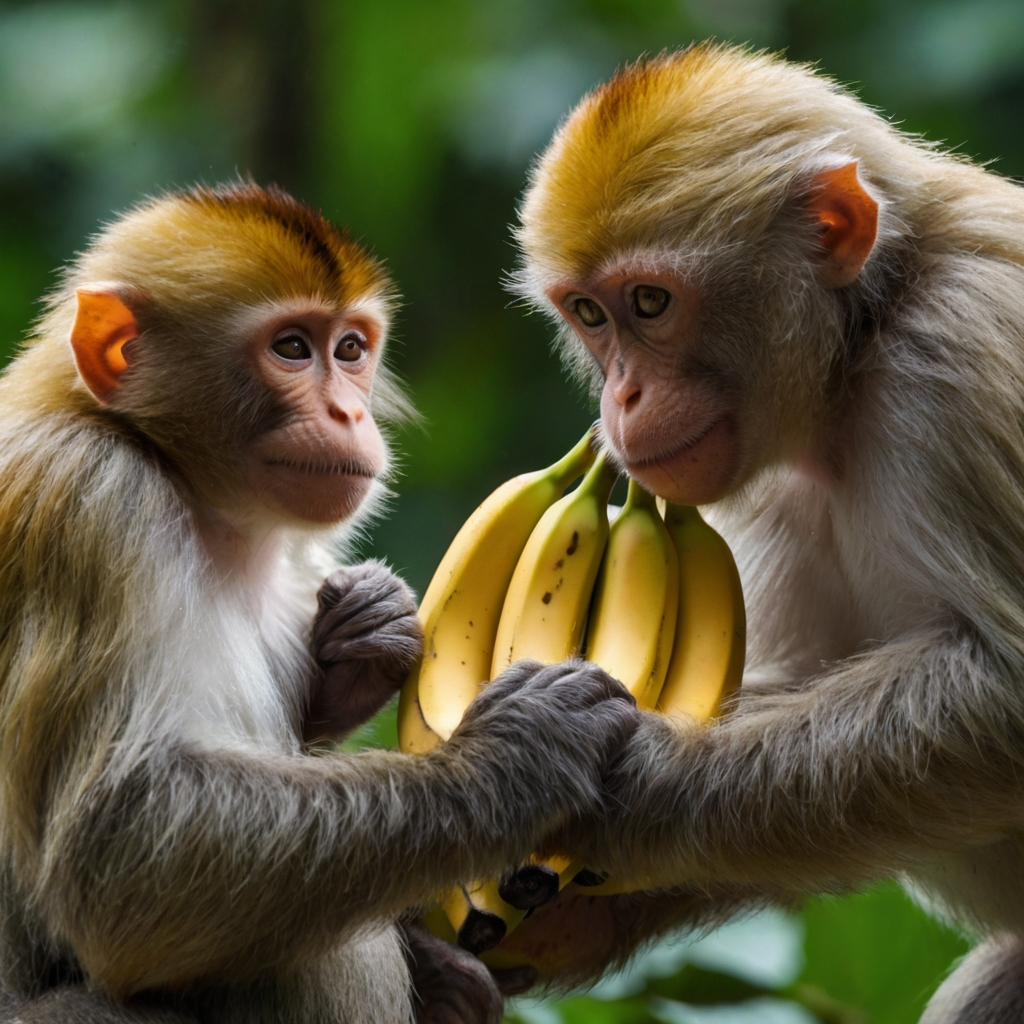Bananas and monkeys are often linked in popular culture, from cartoons to movies, where monkeys are depicted swinging through trees and munching on bananas. While this association is charming, there’s much more to the connection between bananas and monkeys that many people don’t realize. In this article, we’ll explore the intriguing relationship between these two, touching on the diet, behavior, and misconceptions surrounding monkeys and their love for bananas. banana:b4hnuk08dew= monkey.
Do Monkeys Really Eat Bananas?
Contrary to popular belief, bananas are not a primary food source for most wild monkeys. Monkeys in the wild have a varied diet, including fruits, nuts, leaves, insects, and even small animals. While monkeys do enjoy eating fruits, bananas, as we know them today, are cultivated by humans and aren’t as readily available in most wild habitats.
That said, bananas are often fed to monkeys in zoos and sanctuaries because they are easy to obtain, nutritious, and provide a quick source of energy.
Why Do Monkeys Like Bananas?
Monkeys are natural fruit eaters, and bananas are sweet, soft, and packed with nutrients like potassium, vitamin B6, and fiber. The sugar content provides them with an instant energy boost, which is especially useful for active animals like monkeys. Additionally, bananas have a natural softness, making them easy for monkeys to peel and eat without much effort.
Bananas in Captivity vs. the Wild
In captivity, monkeys often receive bananas as part of their daily diet, leading to the misconception that bananas are their main food source. However, bananas in the wild are different from the ones humans consume. Wild bananas, known as plantains, are tougher, smaller, and less sweet. The modern bananas found in grocery stores are a cultivated variety that has been bred to be sweeter and easier to consume.
In the wild, monkeys’ diets vary depending on their species and location. For example:
- Capuchin Monkeys: Found in Central and South America, Capuchins eat a diet that includes fruits, insects, nuts, and small vertebrates.
- Macaques: These monkeys have a more flexible diet, including leaves, roots, and fruits, depending on their habitat.
- Howler Monkeys: These large monkeys prefer leaves over fruit, as their digestive system is adapted to break down fibrous plant material.
Health Implications of Bananas for Monkeys
While bananas are a good treat for monkeys, they should not be the primary food source, especially in captivity. how did Curious George die The high sugar content can lead to health issues such as obesity and diabetes if consumed in large quantities. Zoos and sanctuaries carefully monitor the amount of fruit, including bananas, that they feed to monkeys to ensure a balanced diet.
The Role of Bananas in Monkey Training
In many zoos and sanctuaries, bananas are used as a reward during training sessions. Positive reinforcement helps to train monkeys to perform certain behaviors, whether it’s for medical check-ups, enrichment activities, or simply to engage them in playful behavior. banana:b4hnuk08dew= monkey The monkeys’ natural fondness for bananas makes them an ideal treat for this purpose.
Fun Facts About Monkeys and Bananas
- Bananas Are Technically Berries: Bananas are classified botanically as berries, a fact that surprises many people. Monkeys, being natural fruit lovers, are drawn to them just like other fruits.
- Monkeys Peel Bananas Like Humans: Ever noticed how monkeys peel bananas from the bottom? This is the most effective way to peel a banana and avoid squashing the fruit.
- Not All Monkeys Eat Bananas: While many species of monkeys will eat bananas when offered, not all of them include bananas in their natural diet. For example, leaf-eating monkeys, such as colobus monkeys, prefer fibrous vegetation over fruits.
Conclusion
While the idea of monkeys loving bananas is a fun and enduring part of popular culture, the reality is more nuanced. Monkeys do enjoy bananas, but they are not a staple of their diet in the wild. banana:b4hnuk08dew= monkey Understanding the true relationship between monkeys and bananas helps us better appreciate these fascinating animals and the care required to maintain their health in both the wild and captivity.




